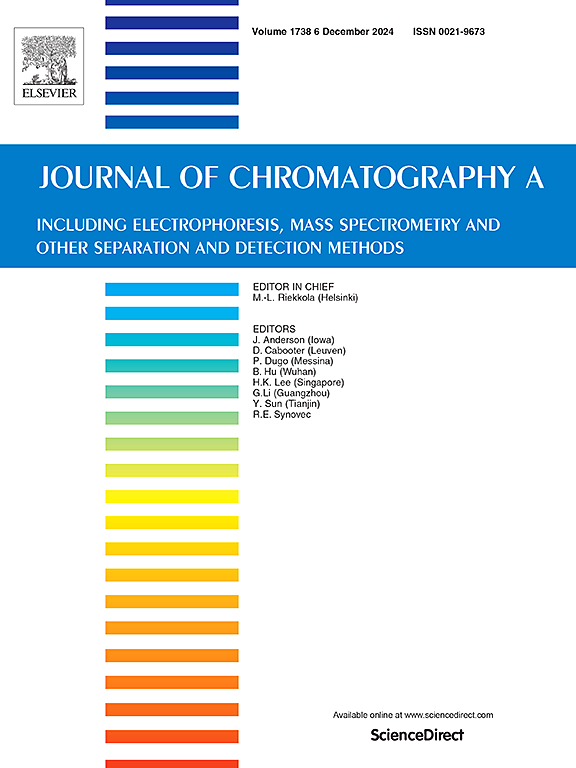Green solvent-based high-throughput dispersive liquid-liquid microextraction for detecting strobilurin fungicides in environmental water samples
IF 3.8
2区 化学
Q1 BIOCHEMICAL RESEARCH METHODS
引用次数: 0
Abstract
A green solvent-based high-throughput dispersive liquid-liquid microextraction (HTDLLME) method has been developed as an environmentally friendly, straightforward, and efficient sample pretreatment technique. Six batches of extractant (eucalyptol) and dispersant (γ-valerolactone) mixtures were simultaneously injected into six samples and uniformly dispersed using electric 12-channel pipettes, achieving rapid extraction. The extractant and dispersant are sustainable, renewable, and non-toxic, eliminating the need for harmful solvents. The rapid dispersion and spontaneous separation of the extractant do not require auxiliary devices or demulsifiers, aside from the electric 12-channel pipettes. The combined use of electric 12-channel pipettes and deep-well plates increased pretreatment throughput, enabled semi-automatic operation, and improved overall efficiency. UHPLC-MS/MS was selected as the detector to ensure the sensitivity of the proposed method. Under optimal extraction conditions, the linear range was 0.002–0.2 μg L–1. The limit of detection and limit of quantification were 0.001 μg L–1 and 0.002 μg L–1, respectively. The intra-day and inter-day relative standard deviations ranged from 2.4 % to 5.5 % and 1.5 % to 5.8 %, respectively. The green solvent-based HTDLLME-UHPLC-MS/MS method achieved rapid detection of SFs in different environmental samples, with extraction recoveries of 81.1 %–105.8 %. Greenness and blueness evaluation tools confirmed the environmental friendliness and practicality of the method. The green solvent-based HTDLLME approach provides a sustainable, straightforward, and practical solution for processing multiple samples simultaneously, supporting effective environmental monitoring.
求助全文
约1分钟内获得全文
求助全文
来源期刊

Journal of Chromatography A
化学-分析化学
CiteScore
7.90
自引率
14.60%
发文量
742
审稿时长
45 days
期刊介绍:
The Journal of Chromatography A provides a forum for the publication of original research and critical reviews on all aspects of fundamental and applied separation science. The scope of the journal includes chromatography and related techniques, electromigration techniques (e.g. electrophoresis, electrochromatography), hyphenated and other multi-dimensional techniques, sample preparation, and detection methods such as mass spectrometry. Contributions consist mainly of research papers dealing with the theory of separation methods, instrumental developments and analytical and preparative applications of general interest.
 求助内容:
求助内容: 应助结果提醒方式:
应助结果提醒方式:


